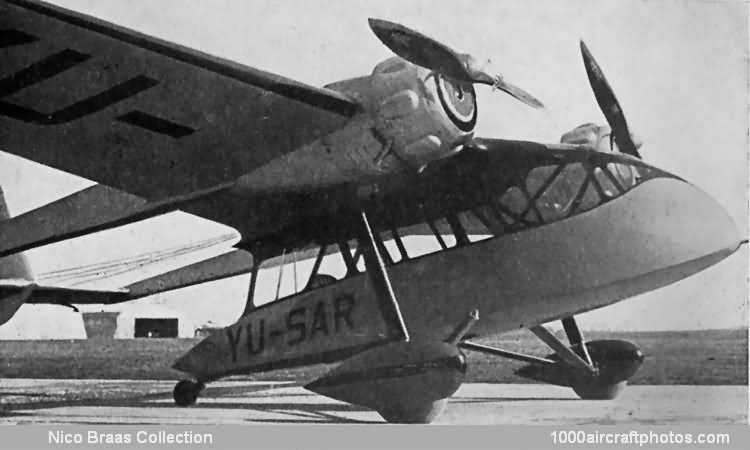The MMS-3 is one of the lesser known types, designed by Ing. Milenko Mitrovich, Technical Director of the Yugoslavian airline company Aeroput (Air Ways). Built at the Aeroput workshops, Zemun, Belgrade, Yugoslavia, the three-seat twin-engined monoplane was of mixed construction with an un-strutted high shoulder wing. The wooden wing consisted of a double box-shaped wing-spar with a leading edge covered with birch wood. Rest of the wing was covered with plywood covered with doped fabric.
It featured twin tail booms connected by a horizontal tail plane, the elevator at the tail was fitted with small so-called 'Flettner' flaps. The single vertical tail was centrally placed on the horizontal tail section. The short fuselage section, including the pilot/passengers cabin, had a well streamlined rounded nose and ended at the rear with a small conical tail section. Three seats were placed on a row with a door on each side that could be opened upwards.
It was fitted with two 90 hp Pobjoy Niagara seven-cylinder air cooled radial engines. All fuel was housed in two fuel tanks in the central wing section with a total capacity of 70 gal (265 l). The two non-retractable main wheels were placed just after the engines in front of the tail booms. They were connected to the fuselage by a V-shaped oleo-pneumatic shock absorber. A small tail wheel was placed at the extreme end of the fuselage. For use from simple grass strips low pressure tires were fitted.
Only one prototype was built, which first flew in January 1936. The flight characteristics were very good and safe, at loss of speed and power, the plane would automatically enter into a glide flight without stalling. Also on a single-engine power, normal turns could be made. It was registered to Aeroput as YU-SAR in September 1936, two years later, October 1938 it was withdrawn from use. In April 1941, it was acquired by the Yugoslav Army, but the same month it was destroyed at Grab, Herzegovina."
